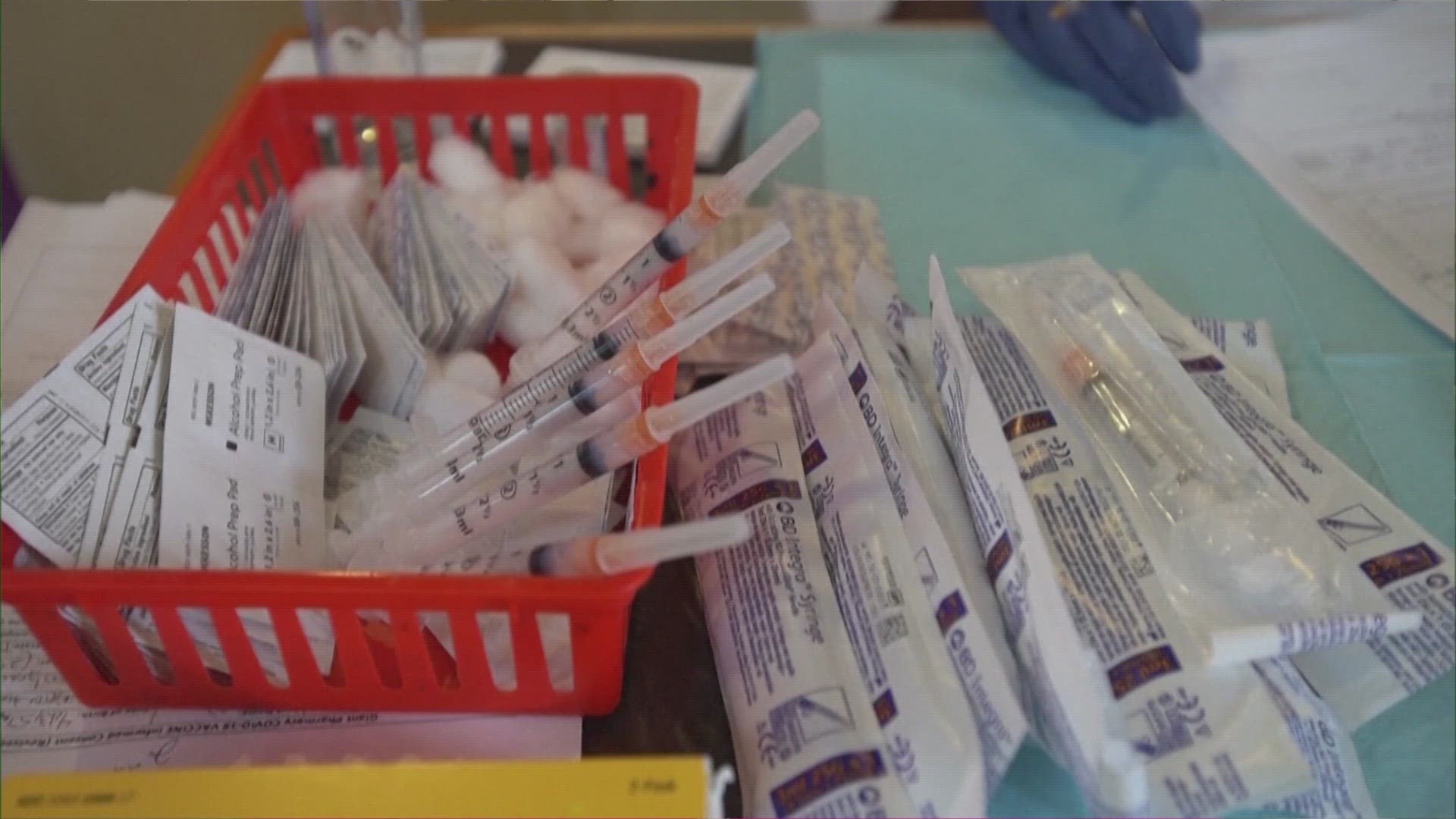SAN ANTONIO — We're tracking the latest numbers from the coronavirus pandemic in San Antonio and across Texas. Here are the latest numbers reported by Bexar and surrounding counties:
- Bexar County: On Thursday, 210 new cases were reported, bringing the total number of cases to 203,191. Three new deaths were reported, bringing the local death toll from virus complications to 3,076.
- Hays County: On Thursday, officials reported 60 new cases in the county and no additional COVID-related fatalities. There is now a total of 17,017 lab-confirmed local cases, while the death toll remained at 236. Officials estimate 16,379 residents have recovered, while 402 are still ill with the virus.
- Comal County: Officials reported 45 new cases on Thursday, along with no additional virus-related deaths. As of Thursday, 9,636 total COVID-19 cases have been reported, including 5,069 confirmed and 4,546 probable cases, while 305 county residents have died due to COVID-19 complications.
More county case information is available through the Texas Department of Health Services COVID-19 dashboard.
How Bexar County is trending
We've tracked how many coronavirus cases have been confirmed in Bexar County from the time officials began reporting cases in March 2020. The graphic below shows the number of cases since June and charts those daily case numbers along a 7-day moving average to provide a more accurate picture of the overall coronavirus case curve in our area and the direction we're trending amid the pandemic.
On Thursday, San Antonio Mayor Ron Nirenberg reported an additional 210 coronavirus cases in Bexar County. At least 203,191 county residents have been diagnosed with the virus, and the seven-day rolling case average rose to 179.
Three new virus-related fatalities were reported; the local death toll rose to 3,076.

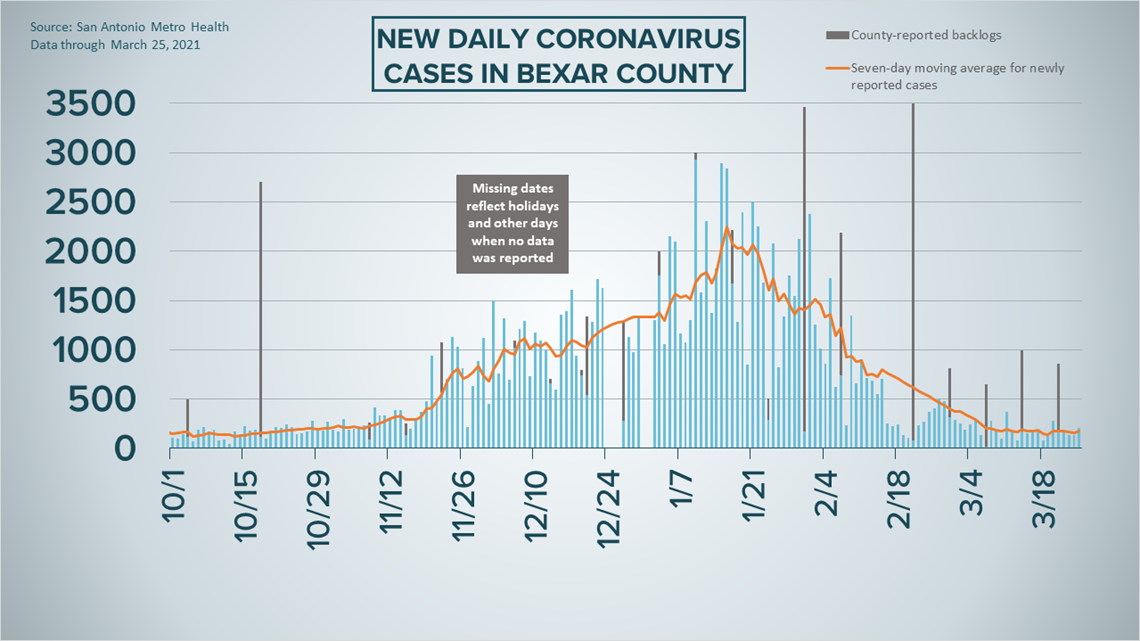
31 patients were admitted into area hospitals in the last 24 hours; 188 concurrent patients are receiving treatment for COVID as hospitals rose for a second straight day Thursday. Of those 188 patients, 39 are on ventilators and 69 are in intensive care.

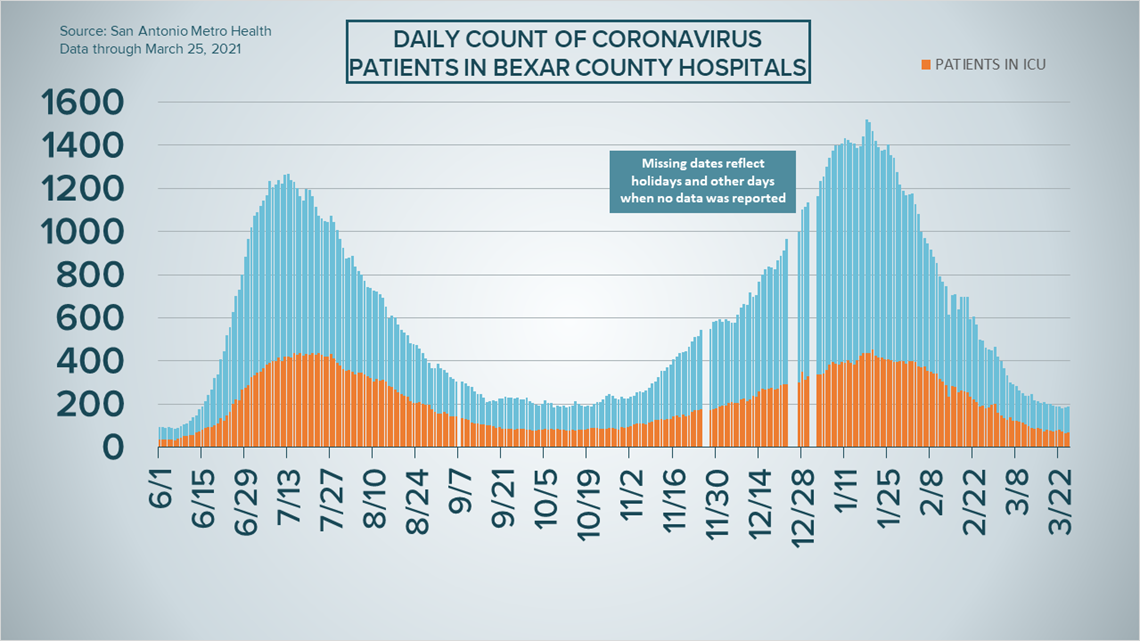
Monday's weekly update of the Warning Signs and Progress Indicators for Bexar County saw Bexar County holding steady at the low-risk level. The positivity rate dropped to 2.3 percent, which is the lowest rate since April 2020, when Metro Health began tracking data.
Coronavirus in Texas
The total number of novel coronavirus cases in the state since the pandemic began grew by 3,234 on Thursday, according to the Texas Department of State Health Services. That total includes 2,167 new confirmed cases, 788 new probable cases, and a backlog of 279 cases. More details can be found on this page.
Thursday's figures bring the total number of Texans diagnosed with COVID-19 to more than 2.759 million.

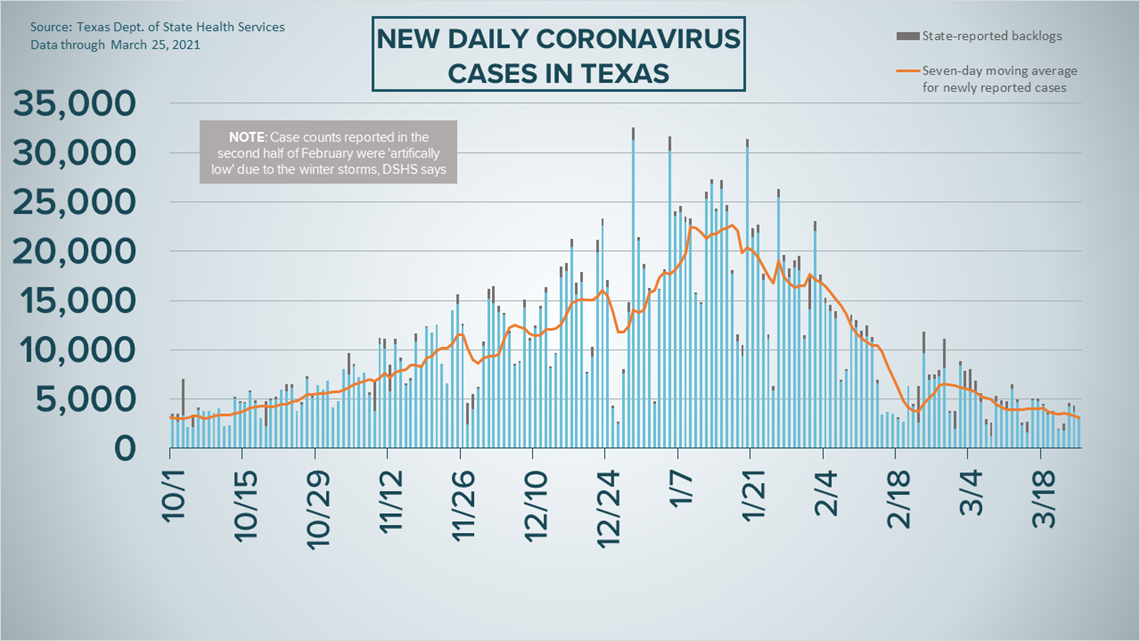
Meanwhile, state health authorities reported an additional 132 deaths from coronavirus complications in Texas. In all, 46,868 Texans have died from COVID-19 complications.
The number of concurrent hospitalizations across the state, dropped by 51 over the last 24 hours to 3,410 COVID-19 patients receiving treatment for their symptoms across the state, as of Thursday.
The state, meanwhile, estimates that about 2.607 million Texans have recovered, while 98,916 Texans remain ill with COVID-19.
The latest update from the Texas Education Agency showed that there have been at least 194,936 cumulative cases among staff and students on Texas public school campuses through March 14. That number comprises 127,196 positive student cases and 67,740 staff cases. More information can be found here.

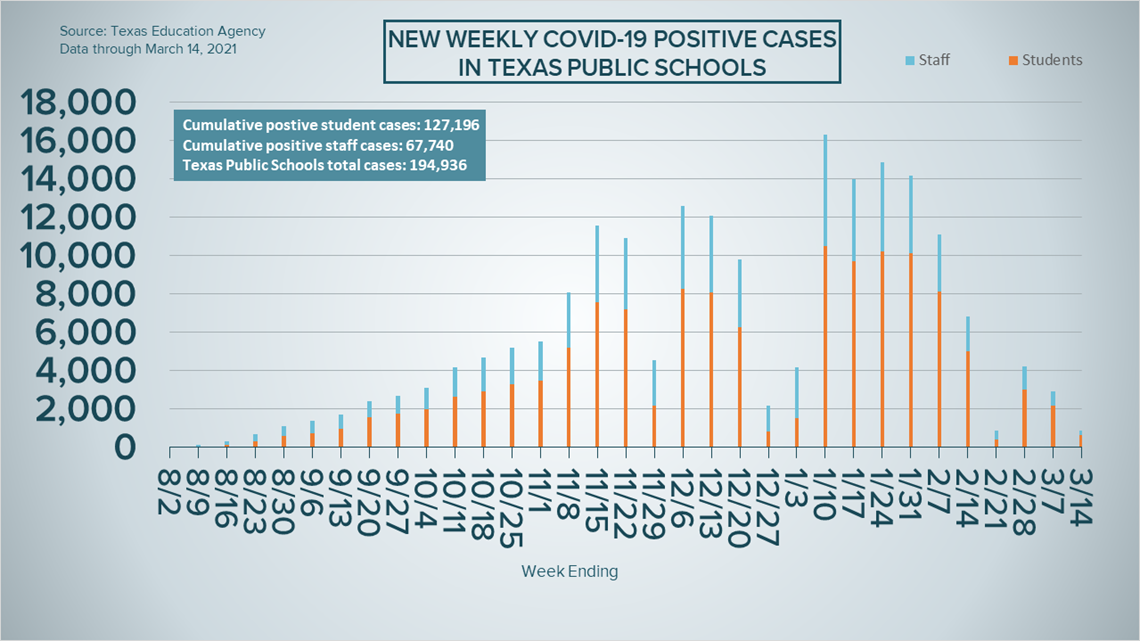
The TEA typically releases new data on school cases on Fridays.
Latest Coronavirus Headlines
- What families should do if kids are not vaccinated
- SAISD approves school holiday to allow for teacher vaccinations
- Biden doubles goal of COVID vaccines to 200 million doses
- 1 report, 4 theories: Where did COVID-19 come from?
- AstraZeneca insists COVID vaccine 76% effective after US dispute
- Biden's administration announces another $10B to boost COVID vaccinations
- All adults in Texas can get the COVID vaccine starting March 29: What you need to know
Coronavirus symptoms
The symptoms of coronavirus can be similar to the flu or a bad cold. Symptoms include fever or chills, cough, shortness of breath or difficulty breathing, fatigue, muscle or body aches, headache, new loss of taste or smell sore throat, congestion or runny nose, nausea or vomiting, and diarrhea, according to the Centers for Disease Control.
Most healthy people will have mild symptoms. A study of more than 72,000 patients by the Centers for Disease Control in China showed 80 percent of the cases there were mild.
But infections can cause pneumonia, severe acute respiratory syndrome, kidney failure, and even death, according to the World Health Organization. Older people with underlying health conditions are most at risk.
Experts determined there was consistent evidence these conditions increase a person's risk, regardless of age:
- Chronic kidney disease
- COPD (chronic obstructive pulmonary disease)
- Obesity (BMI of 30 or higher)
- Immunocompromised state (weakened immune system) from solid organ transplant
- Serious heart conditions, such as heart failure, coronary artery disease, or cardiomyopathies
- Sickle cell disease
- Type 2 diabetes
- The CDC believes symptoms may appear anywhere from two to 14 days after being exposed.
Human coronaviruses are usually spread...
- Between people who are in close contact with one another (within about 6 feet).
- Through respiratory droplets produced when an infected person coughs, sneezes or talks. These droplets can land in the mouths or noses of people who are nearby or possibly be inhaled into the lungs.
- Some recent studies have suggested that COVID-19 may be spread by people who are not showing symptoms.
Help stop the spread of coronavirus
- Stay home when you are sick.
- Eat and sleep separately from your family members
- Use different utensils and dishes
- Cover your cough or sneeze with your arm, not your hand.
- If you use a tissue, throw it in the trash.
Find a Testing Location
City officials recommend getting a COVID-19 test if you experience fever or chills, cough, shortness of breath or difficulty breathing, fatigue, muscle or body aches, headache, new loss of taste or smell, sore throat, congestion or runny nose, nausea or vomiting, or diarrhea.
Here's a Testing Sites Locator to help you find the testing location closest to you in San Antonio.



